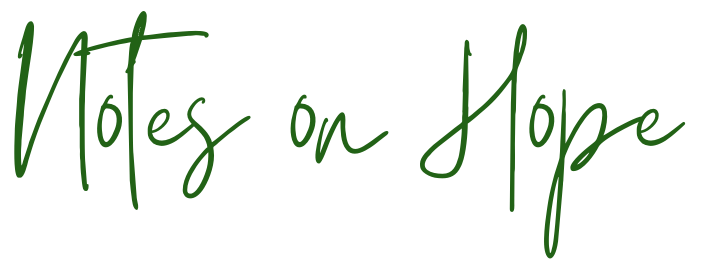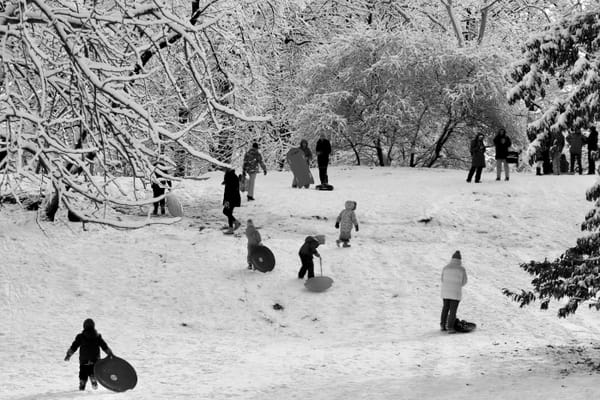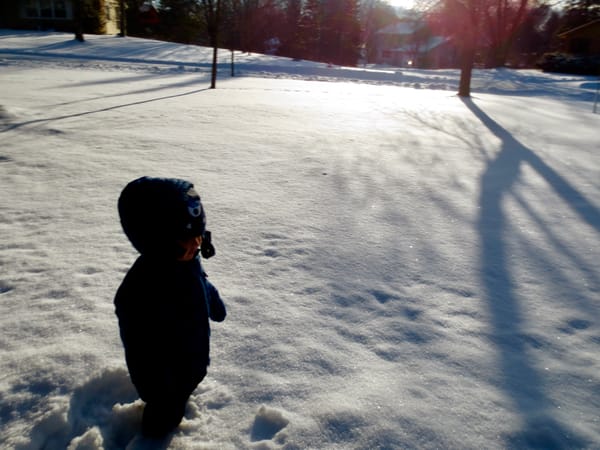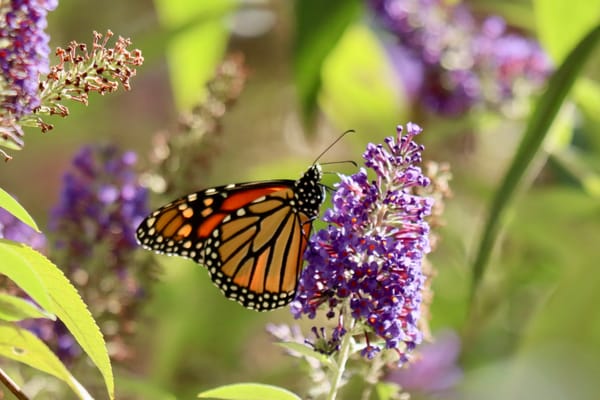What If We Became Less Boundaried?
In defense of vulnerability

“Look, we are not unspectacular things.
We’ve come this far, survived this much. What
would happen if we decided to survive more? To love harder?”
~Ada Limón
My son and I have been working on setting up a new aquarium. We’ve had a small aquarium since he was in preschool, because he’s always had a deep love for animals, and for a brief period we were living in an apartment where we couldn’t have a dog. (Dogs are his most fervent love. His first word was, “doggie,” and his sense of kinship with dogs runs deep.) A fish was unquestionably a compromise, as I think fish usually are, but his fondness for that first fish surprised me. When it died after an impressively long run for a fish, his best friend told me that their teacher had to tell the other kids to stop asking him about it, because it was too upsetting for him. So we’ve kept the aquarium going even after adding a dog and, for a time, a very sweet, elderly bunny to our little menagerie.
In preparing to set up a slightly bigger aquarium with the capacity for several fish, we’ve been doing some research on how to acquire and keep fish ethically (a topic for another time, but worth noting that, if we keep pets in our lives because we love animals, we should do everything we can to act in their best interest, not just in our personal gratification at their company). If you’re keeping multiple fish together, it’s also important to understand how to select fish that will be able to live peacefully together. Fish that can live well together are known as “community fish.”
I’ve always been struck by the ecological definition of community. In biological terms, a community is a group of two or more species living together in the same geographic area and time. Species diversity is essential to the definition—a group of only one species is a population not a community. For the community to remain healthy and sustainable, no species can consume so much that it imperils the existence of other species. Invasive species provide an important reference point, because an invasive species is defined by its tendency to consume or throttle other species so thoroughly that it limits or decimates the biodiversity of the ecosystem. Not all non-native species are invasive, only those that imperil biodiversity.
I’m fascinated by this definition of community, because it feels counter to the way we humans often create community, whether intentionally or not. We are comfort seeking creatures and so we tend to become increasingly insular, drawn to commonality and trepidatious when it comes to difference.
There’s certainly important value to finding our people. Carving out our chosen families and creating spaces where we feel welcome and understood is nourishing. In nature, too, there is a critical security for many species in being part of a group of their own kind. This behavior gets a bad rap among humans. We warn against “pack mentality,” “herd mentality,” or “group think.” But animals form packs, herds, schools, flocks, colonies, prides, and pods because they are essential to survival—not only for protection, but for gathering food, caring for young, and bolstering energy. Think, not only of the wolf protecting its territory, but also of the bird taking its turn at the lead of a V formation and then resting as it falls to the back and coasts on the current created by the birds ahead, regaining strength.

Nature shows us that groups based on commonality are vital. “Bubbles” are not always bad. But nature also shows us that these groups can be more flexible than we might presume. There is documentation throughout nature of cross species care. And ultimately the greatest threat to species survival on a large and long term scale isn’t diversity itself but the destruction of diversity. The greatest threat is the species that absorbs all the resources and strangles the web of interdependence that binds every creature in an ecosystem together, even when our human eye focuses on the clusters of commonality in a landscape rather than the tapestry of difference.

I’ve been thinking about all of this in the context of the increasingly powerful threats to diversity initiatives across every sector, from higher education to corporate America to children’s soccer teams. When we are afraid, we instinctively stick closer to our packs, and this often means sacrificing those more vulnerable. We turn the least powerful among us into decoys, assuming that this will allow us to more effectively protect our own. There are examples of this in nature, too. But there are also examples of drawing the vulnerable in even at the expense of personal risk, and that seems worthy of our attention, especially as we are likely to see and be tempted by more and more efforts at sacrificial exclusion.
We will need to think about this in big structural ways, because the systems that have been established to encourage and protect diversity are under threat. We will also need to be mindful of the use of faux diversity language and posturing to weaken these structures from within. Most topics are complex and warrant complex discussion from a multiplicity of voices, but this is not the same as insisting every point be accompanied by a counter point, which can lead to the elevation of weak evidence and hollow arguments in the deceptive name of balance.
But as we head into the New Year, which is traditionally a time for personal reflection and intention setting, I’m also thinking about how to better navigate between the comfort of commonality and the need for diversity of voice and experience on a more individual level. And this has me questioning the notion of boundaries.
The concept of personal boundaries has pervaded social media and seems to work its way into so many contexts and conversations that it has become an accepted truth of the wellbeing industry. Simply put, personal boundaries are understood as the rules and limits we set for ourselves to gain a sense of control and self-preservation in a world that often feels very out of control. We are told that setting firm boundaries will make us healthier and happier and that a lack of boundaries leads to co-dependence, self-sacrifice, burnout, and compromised values.
I’m dubious.
There are surely circumstances and relationships in which it is helpful, critical even, to remind ourselves that we have choices and autonomy and that we aren’t obligated to accept callous or dehumanizing treatment. I’m not suggesting that we should volunteer for martyrdom or surrender our ability to cultivate our own peace. But I question whether “boundaries” is the most helpful way to describe this process of remembering and reasserting our humanity.
In my experience, when we are feeling most diminished, care and connection are much more powerful antidotes than isolation, which is an inevitable consequence of using the notion of boundaries as a metaphorical guide to our relationships. And I say this as an innately introverted person. Some degree of solitude is important to me. But in its most literal definition to be boundaried is to be enclosed, and I’m doubtful that creating enclosures around ourselves is as useful a framework for wellbeing as we’ve been led to believe. Boundaries cut us off and establish perimeters that require constant maintenance and guarding. Consider the fact that the other contexts in which we speak of boundaries are usually economic or geopolitical in nature. We map property boundaries and we defend national and political borders. Is this really the best metaphor for a life well lived and meaningfully shared?

In thinking about this, I started searching for the origin of boundaries as a wellbeing concept, and the relationship between personal boundaries and actual psychological research seems tenuous at best. We’re told to believe that establishing and maintaining boundaries is the key to emotional and relational health, and so we erect wall after wall to protect ourselves from the permeability of the world and the weight of others’ needs. The need to protect ourselves is real, especially in a world that is so often overwhelming and that has been made far more so by the flood of people with whom social media tricks us into thinking we are in constant, unwieldy, peripheral relationships. But I wonder if we’ve become so guarded as a result that we’ve increasingly sacrificed care and interdependence in the name of individual health, and I worry that this will ultimately cause more harm than good, both collectively and for each of us as individuals.
There is a natural human desire for containment and a visceral association between a feeling of containment and safety. This is probably why the word boundaries also finds its way into parenting advice. But even here I would argue that boundaries might not be the best word to choose. Children, like all of us, thrive when they feel secure, and so they sometimes behave in outlandish ways in order to confirm the presence and care of those who keep them safe and the reassurance that their power and responsibility is nestled within confines they can realistically manage. But adults establish this sense of security for children through our presence and our care, not through separation. I suspect we rely on the word boundaries, because there simply isn’t a perfect word to describe the unique dynamic of fostering autonomy in children while simultaneously assuring them of their security. But fundamentally this dance is perhaps better described as an act of holding rather than of cordoning off. I think it’s worth noting the nuance because the words we use impact how we understand and enact gestures of care, and I wonder if we would be healthier and happier if we applied this nuance to our own adult lives as well.
One of the most beautiful lessons parenting has to offer us as adults is the deep value of permeability. Our love for our children makes us vulnerable to the threats and insults of the world and to the potential for loss in deep and powerful ways. Our willingness to open ourselves up to these risks carries lessons for what we might gain by becoming more permeable in other areas of our lives.
I have a friend who uses the shorthand phrase “3:00 a.m. friend” to describe the act of extending this kind of permeable care and vulnerability to other people in our lives. 3:00 a.m. friends are the people you can call anytime, day or night. They are the relationships that establish a net of security in both literal emergencies and dark nights of the soul. There is a vulnerability in reaching for another voice in the dark at a time that you know will be inconvenient or even painful, and there is also a vulnerability in the willingness to be on the receiving end by answering the call. This interaction requires a surrender to being un-boundaried, and there is something especially pure and essential in that form of care.
Of course, we can’t be a 3:00 a.m. friend to everyone, and a level of understood reciprocity is important for those relationships that do fall into this especially permeable category. Part of what the call to establish and protect personal boundaries does highlight in a valuable way is the tendency for those who are most often in caretaking roles to become responsible for such a wide array of needs that we drown trying to keep everyone else afloat. It’s understandable that the solution to this would be to establish firm limits and become less willing to answer the phone at 3:00 a.m., let alone offer a hand to a stranger with whom there is no expectation of reciprocity. When we are drowning, we cast off ballast.
But as Lily Scherlis notes in her exploration of the history of the popularization of this concept,
“Boundaries are a Band-Aid in a bad world: if you can’t expect people to care for you and treat you well and protect you from violence or scarcity, you can at least protect yourself from their needs. They aren’t straightforwardly wrong to do this: negotiating other people’s needs, which are often unreasonable and unfulfillable and intolerable, is fraught, baffling, and overwhelming. It demands a good strong metaphor, and the image of boundaries is unusually tensile. But the term takes on its own momentum, overrunning intimacy with alienation. In its most extreme forms, boundary-speak makes it feel like some of us have given up on each other: the only effective social strategy left is to lock yourself in, fortify your defenses. If your emotional defense budget isn’t big enough to hold the line and you get trampled by other people’s greed, that’s on you.”
We live in a culture that often prizes self-focus over communal care, while simultaneously bombarding us with a cacophony of voices and demands. But I worry, as Scherlis warns, that in our efforts to tourniquet the wounds that inevitably open as a result of this conflict, we are deepening the very lack of care that created the wounds in the first place. As we barricade ourselves off from the very real threats of an often cruel and overbearing world and protect ourselves from the demands of systems that are designed to extract all they can from us, how tightly will we eventually need to draw the lines, as the world continues to encroach on our individual islands of peace?
I’m not suggesting that we are obligated to place our heads in the lion's mouth and sacrifice ourselves to real threats that genuinely imperil our wellbeing and survival. But I do wonder what might happen if we made it a habit to examine the texture of the walls we’ve built and to look to the other side every now and then to determine how real those threats are and to ask which boundaries are serving us and which are merely separating us. Otherwise I fear that we will become our own invasive species, gradually constraining the breadth and diversity of our communities until we find ourselves siloed and alone—a mere population.
The poet, Molly Peacock, asks in her poem, “Altruism,”
“What if we got outside ourselves and there
really was an outside out there, not just
our insides turned inside out? What if there
really were a you beyond me, not just
the waves off my own fire, like those waves off
the backyard grill you can see the next yard through,
though not well—just enough to know that off
to the right belongs to someone else, not you.”
The world often feels very unsafe, and we have good reason to expect that this will only become more so in the years to come. It will surely become even more tempting to erect barriers, and in some cases it may be necessary. Those who are the most vulnerable are likely to become even more so. But what if, instead of running through our personal security checklists, we worked consciously and intentionally to become each other’s security? What if, instead of resolving to hold firm boundaries around our own vulnerabilities, we took note of those pain points as the indicators of our own need for care and became detectives, alert for signs of the same need in others and ready to offer support? What if we approached vulnerability like parents establishing security through an embrace? What if we made a commitment to look for ways to encircle one another with care instead of keeping each other at arm’s length?
I wonder if we would all—those sheltered within the protective circle and those forming it—feel even safer and more secure than we do now, sheltered within our own fortresses and narrowing our personal ecosystems.
My New Year’s wish is that we find ways to get better at seeing each other’s vulnerabilities and caring for them, and in doing so become more able to share our own vulnerabilities, knowing that we can also find care. I think this is the only way we will tip the balance away from callousness and ensure that the alternative to martyrdom doesn’t have to become self-isolation.
Wishing you the courage to be more permeable in the year to come,
Alicia
If you think someone else in your life might need some hope, please share. It’s always easier to hold onto hope when we’re not doing it alone. And if you enjoyed this note and are not already a subscriber, please consider subscribing.





